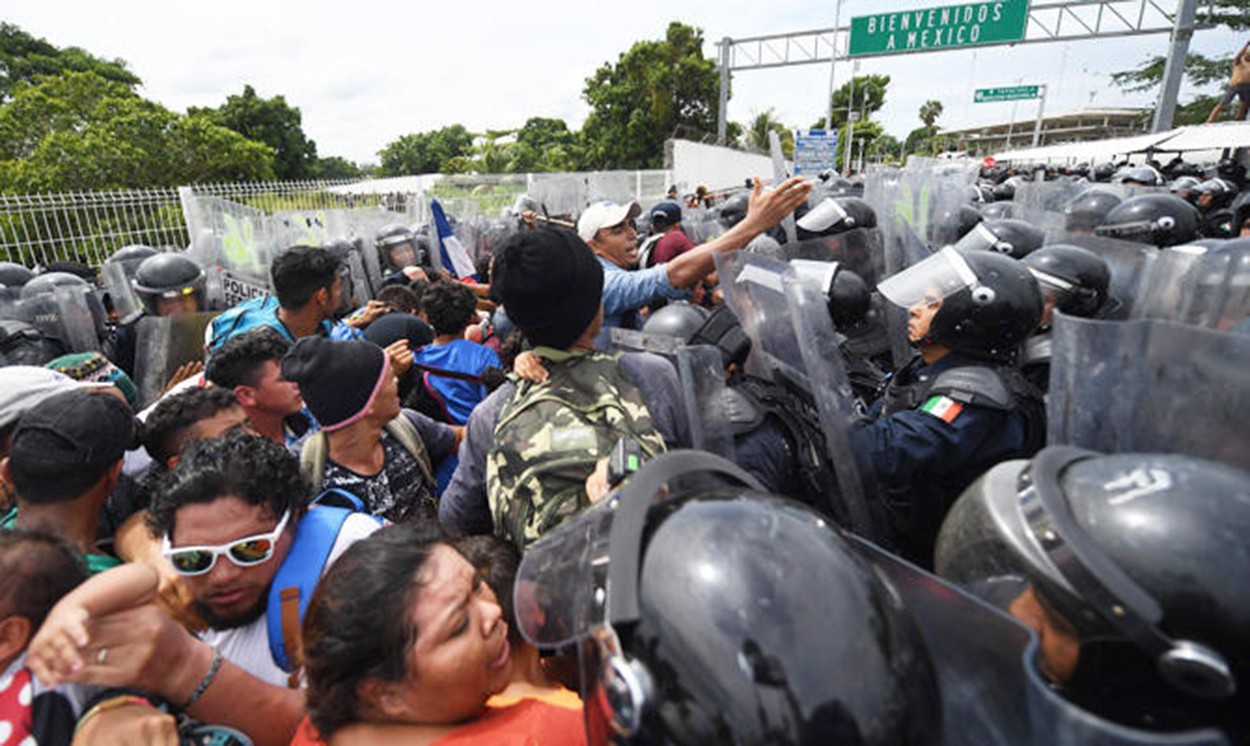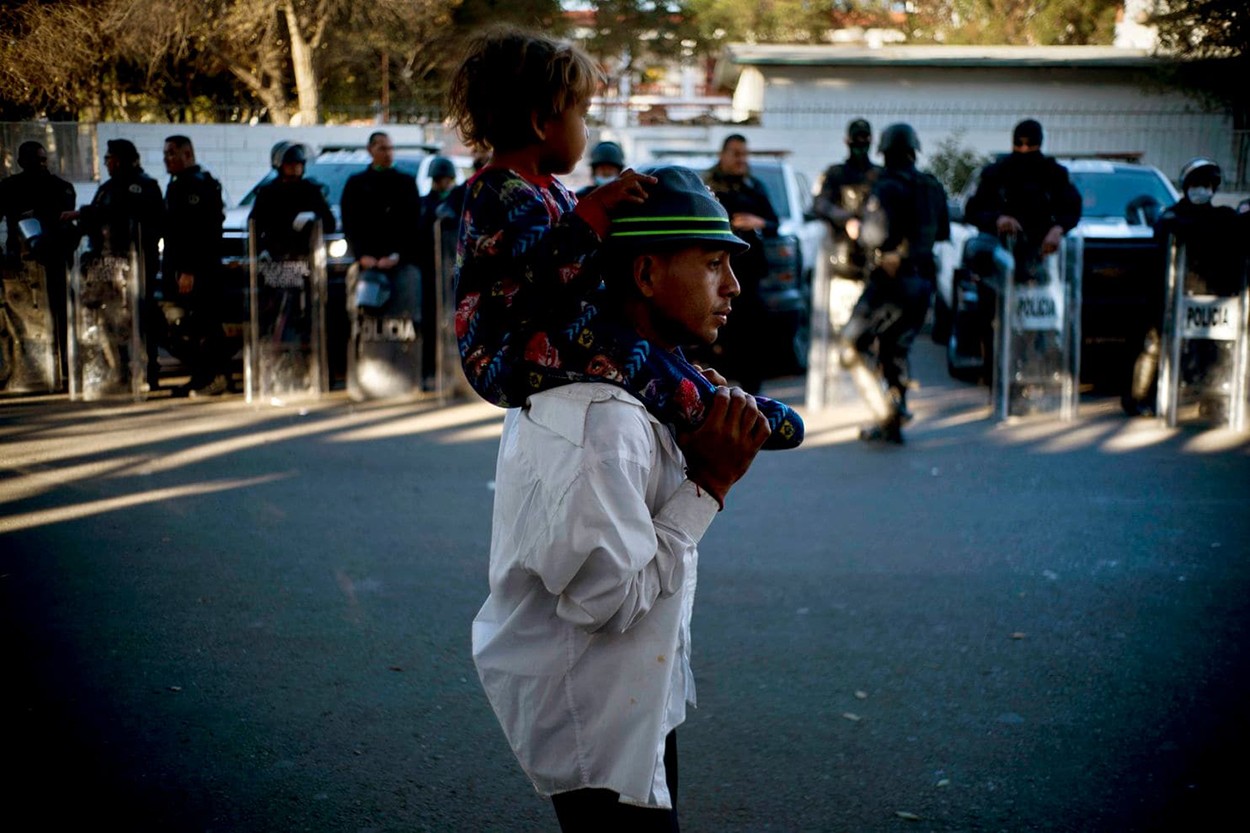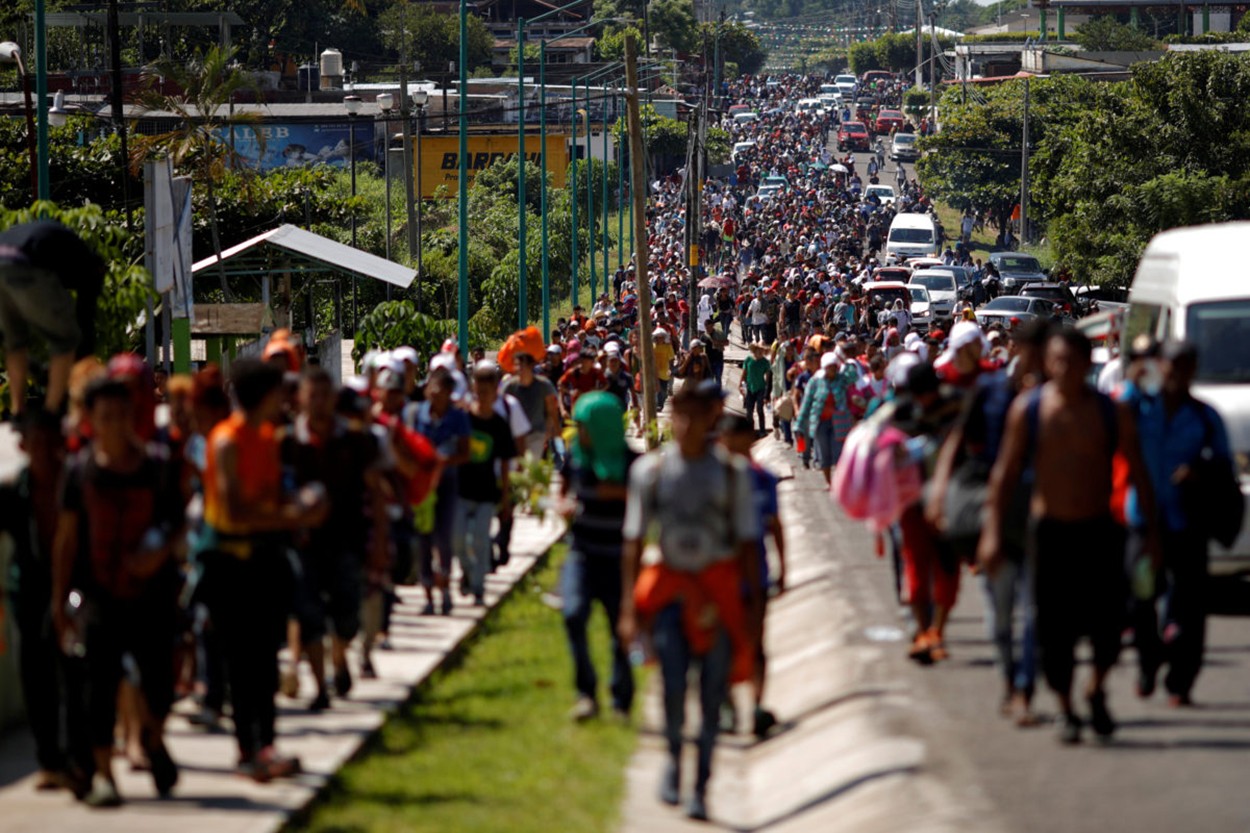Filed under: Editorials, Immigration, Mexico

The following text looks at the reception the migrant caravan received as it traveled through Mexico and the widespread attacks its members there faced from both corporate and social media. Written in mid-November by Kuche Negrx it was originally published on Hey Wild and has been translated into English by Scott Campbell.
A couple of weeks ago, the mainstream media began covering the multitude of migrants who sought entry into Mexico in order to pass through it and reach the United States. Coming mainly from Honduras, with some from other Central American countries, they were able to enter the country using the caravan as a strategy, though not without first receiving a welcome from the Mexican police – an incident that Mexican society in general was highly critical of.
Now being in Mexican territory, their reception in Chiapas was contrasted between people who were in solidarity with them with others who complained of their presence. A few days after their arrival, the government sprayed them with pesticides while they slept before dawn. On their passage through Veracruz, the situation became more complicated. There is talk of a kidnapping by organized crime disappearing more than 100 migrants – mainly women and children. However, the actual figure or what really happened in unknown. The only sure thing is that the route through that state, where these types of events happen most frequently, is one of the most dangerous for migrants.

Mexican police at the border with Guatemala attempt to prevent the migrant caravan from entering Chiapas.
At the same time, the media began talking about the presence of diseases among members of the caravan, such as malaria or tuberculosis, generating further stigmatization, now of their very bodies. Being exposed to all this, “civil society” in general began to question who came in as part of this caravan and about their worry that some of them will stay in the country to commit crimes, as they are certainly connected to the Maras gang.
Making use of his usual insolence and idiocy, Trump commented about the presence of “Arabs, but I don’t have proof.” For its part, the Mexican government maintained a human rights discourse. Finally, after Day of the Dead, the migrants arrived in Mexico City – mainly by hitching rides or walking. At the San Marcos entrance to the State of Mexico, support and information booths were set up that informed the migrants about shelter at the stadium outside of the Ciudad Deportiva metro station.
At this space prepared for their stay in the city, the district of Iztacalco, human rights groups, non-profits, and the Red Cross began providing support for the migrants who arrived in the hundreds on November 4 and subsequent days. This setting is where the xenophobia of Mexicans began to take shape, or better put, began to show itself directly. Since the caravan’s arrival, many muttered about “Why did they enter illegally and violently?” and on social media there were images of police supposedly injured in the events at the border. (Those were false, as they came from other incidents.) This was only the beginning of several escalations on social media, sustained by photos that were fake or taken out of context, enabling and sustaining the classism, xenophobia, and even racism of Mexicans.
As a result, the days passed and the sensationalist reporting without context began. These reports came from establishment media reporters as well as people who entered the shelter and took photos with their cell phones, later publishing them on social media and further inciting ignorance of the situation. Having the opportunity to go to the shelter twice, we realized that the situation is very different from that offered by the media and other aspiring influencers who are talking about the subject.

Father and child, part of the caravan, walk past police line in Tijuana.
First, we will talk about the collection of supplies. At various points before and during the arrival of the migrants, they began to receive donations of clothing, footwear, backpacks, personal hygiene products, and food. Well, the Red Cross received much of this and kindly selected what was good and what wasn’t. As such, the good was folded and packaged and the bad was placed next to one of their tents in the grass. Many became outraged at this situation: how is it possible, such contempt for the support provided? Putting the clothes on the ground next to garbage cans? They began to say, “The migrants are ungrateful, turning up their noses at the support that has been given them.”
Something not mentioned was the behavior of some members of the Red Cross or non-profits who began to profit off the migrants by selling them what had been donated. There was tension as some migrants complained about this situation, but who could they complain to? Although there was clothing strewn on the ground (as there was no other place to put it), not everything was usable. There were broken or high heel shoes and holey shirts. That’s why it was not surprising to find migrants who, when they saw people arrive with clothes to donate, quickly approached them to ask for particular garments, especially shoes and warm clothes. Many were looking for shoes because they were barefoot.
Regarding food, one can mention the long lines to get a plate, which on many occasions had food that was already cold or simply not enough. Hence the act of many migrants buying food elsewhere. This fact upset many, as if because they were migrants they were not allowed to go out and buy food, supported with photos of trash cans with food inside, yet again without context. Similarly, they were attacked for having water on days service was cut to the rest of the city: one more example of the intolerance of the capital’s residents. With respect to the space they slept it, some were given mats, others had donated tents, others were under tarps, but nothing like the image of rows of well-placed blue tents circulating on social media as a contrast to the situation in Nayarit [which had been hit by a hurricane in October]. Many migrants continued sleeping on the grass or cement with only some sheets or folded clothes for a pillow.
Now, critically looking at the caravan itself, one could observe many forms of violence created inside the shelter, such as the segregation of non-heterosexual persons. There have been reports of harassment and attacks. Another fact is the prostitution being practiced and, without a doubt, the prevailing machismo, as it was mainly men who made up the caravan.

Migrant caravan walking in Guatemala towards Mexico.
Such a complex situation, which can’t be easily grasped, can begin to be understood by looking at the U.S. interventions in the past decades in these Central American countries. As well as the presence of mines with their hired gunmen, drug trafficking and the violence left in its wake, the presence of guerillas and paramilitaries, in short, a series of circumstances very similar to those experienced in Mexico. We would compare this migrant caravan with the waves of migrants fleeing war who have arrived in Europe in recent years, mainly from the Middle East. Looking at these contexts, the relationship of both to the expansion of capitalism and its process of violent displacement is clear.
Seeing such a situation, as punks, people connected to anarchism, or simply as people critical of the system, we cannot remain quiet. It is the moment to act and show our solidarity, putting to one side citizenist charity. In some parts of Europe, they have begun to act by creating okupas to receive migrants, creating fronts to combat neo-fascist groups, tearing down fences on the borders. For their part, some anarchist individuals and collectives in Mexico have supported the caravan directly or indirectly in a low-profile way. And now that it has left the capital on its way north, there have been calls to support it with food along the way.
To conclude, it is necessary to emphasize how the citizenry showed its classist and racist face with the passing of the migrant caravan. Fundamental ingredients for fascism, very similar to what is happening in Latin America. For example, the weekend march led by the middle and upper classes asking for the continued construction of the new international airport (NAICM) took the opportunity to express their rejection of the migrants.
What remains is to stay alert for the remainder of the caravan’s path and to be aware of the other caravans en route – especially upon their arrival to the border with the United States, where a military operation has already been deployed to prevent its entry. In addition, it is clear that these will not be the last ones. Migration from Central and South America will increase in the coming years alongside the increase of violence being experienced in those areas.
Down with real and imaginary borders!
By Kuche Negrx





